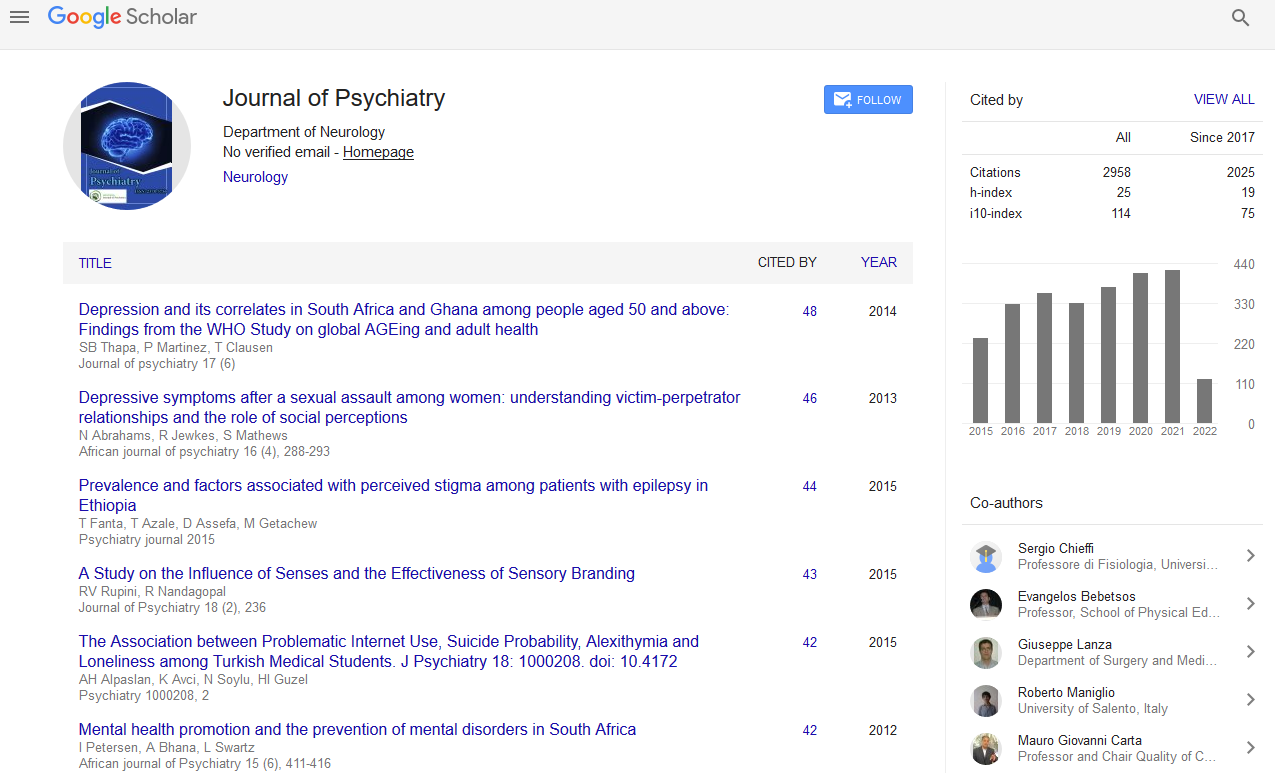PMC/PubMed Indexed Articles
Indexed In
- RefSeek
- Hamdard University
- EBSCO A-Z
- OCLC- WorldCat
- SWB online catalog
- Publons
- International committee of medical journals editors (ICMJE)
- Geneva Foundation for Medical Education and Research
Useful Links
Share This Page
Open Access Journals
- Agri and Aquaculture
- Biochemistry
- Bioinformatics & Systems Biology
- Business & Management
- Chemistry
- Clinical Sciences
- Engineering
- Food & Nutrition
- General Science
- Genetics & Molecular Biology
- Immunology & Microbiology
- Medical Sciences
- Neuroscience & Psychology
- Nursing & Health Care
- Pharmaceutical Sciences
Abstract
Burnout Syndrome among Medical Workers at Kenyatta National Hospital (KNH), Nairobi, Kenya
Donald A Kokonya, John M Mburu, Dammas M Kathuku, Ndetei DM, Adam H. Adam, Desire A. Nshimirimana, Phocas S. Biraboneye and Louise Mapleh Kpoto
Background: Little has been documented on the extent of the impact of work environment, interpersonal relationships, coping mechanisms and the burnout syndrome on medical workers in Kenya. Worldwide, medical workers have been found to be vulnerable to burnout syndrome, which in turn lowers the quality of their lives and health services provision.
Objective: To establish the prevalence rate of and factors associated with burnout syndrome among medical workers at the Kenyatta National Hospital, Nairobi.
Setting: Kenyatta National Hospital, Nairobi.
Design: Descriptive cross-sectional.
Subjects: Three hundred and forty five (345) medical practitioners and nurses with six or more months of work experience at Kenyatta National Hospital, Nairobi, Kenya.
Outcome measures: Prevalence rate, socio-demographic characteristics, factors associated with and influencing burnout syndrome among the medical workers at the Kenyatta National Hospital, Nairobi.
Methods: Proportionate allocation and simple random sampling strategy were used to recruit medical practitioners and nurses on the basis of qualifications, departments and distribution.
Results: The crude prevalence rate of burnout syndrome was 95.4%. All sociodemographic factors and work environment related factors were found to be strongly contributing to their burnout syndrome. The burnout syndrome for socio-demographic factors were in excess of 95.0 and ‘self-factors’ contributed 14.0%. Patients and their relatives contributed 40.5% while work environment contributed the largest proportion (55.5%) of the total scores for burnout intensity.
Conclusion: Burnout syndrome was found to be high among medical workers at KNH, Nairobi. The prevalence rate (95.4%) in this study was higher than that found in studies in other countries worldwide (66.0%). The major contributors to burnout intensity scores were work environment (56.0%), patients’ relatives (41.0%) and self factors (14.0%).


